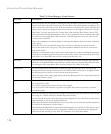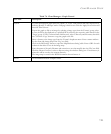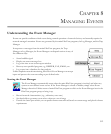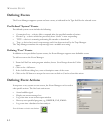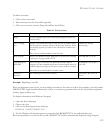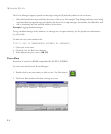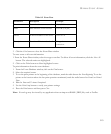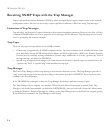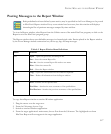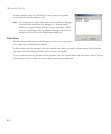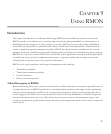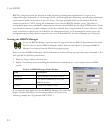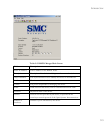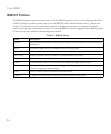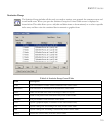
M
ANAGING
E
VENTS
8-6
Receiving SNMP Traps with the Trap Manager
Trap is a protocol mechanism defined in SNMP by which managed devices report unique events to the network
management station. Devices can be set up to report specified conditions to EliteView using Trap messages.
Limitations of Trap Messages
Trap messages are designed to report information that requires immediate attention. However, the value of Traps
is limited in SNMP because there is no guarantee these messages will be delivered. Trap messages may be lost en
route or ignored by the network manager.
Trap Types
There are two types of traps defined in the SNMP standard.
• Generic trap is supported by all SNMP-compliant devices. The most common events include cold start, warm
start, link down, link up, SNMP authentication failure, and EGP neighbor loss. (EGP is the Exterior Gateway
Protocol used to exchange routing information.) Generic traps, numbered 0 to 5 in the “generic trap” field of
the trap message, are defined in TRAP.INI.
• Specific trap is supported according to the characteristics of the device. Specific traps are numbered 6 in the
“generic trap” field. A “specific trap” field identifies the trap type.
Trap Manager
EliteView’s Trap Manager collects trap messages and converts them into events. The Trap Manager generates a
“trap” event and outputs a text message according to the pattern specified in TRAP.INI. These events are then
handled by the Event Manager.
If the TRAP.INI file is changed, re-boot the Trap Manager by closing it and then starting it again.
The Trap Manager has no tangible user interface. When the main EliteView program is started, if the Trap
Manager is not loaded automatically (as defined in NETMGR.INI), then you can load it from the Utilities menu,
or from the Window’s Program Manager (by clicking on the Trap Manager icon in the EliteView program group).
When EliteView terminates, the Trap Manager is also closed.



